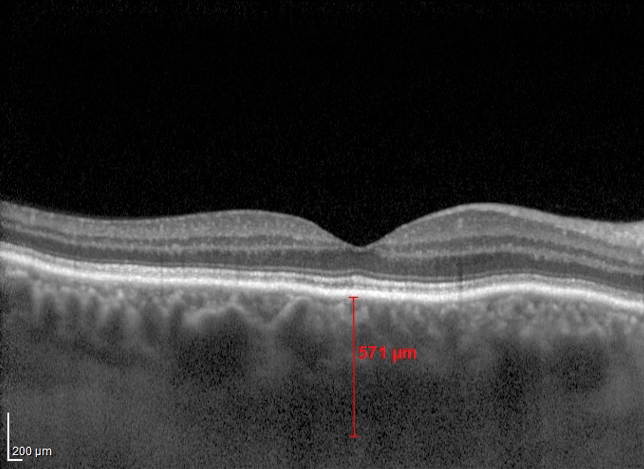 |
| Patients with hyperopia tend to have thicker choroids, researchers found. Photo: Jim Williamson, OD, and Meagan Williams, OD. Click image to enlarge. |
A recent study investigating differentiating characteristics between emmetropic and moderate-to-high hyperopic children found that the latter had greater choroidal thickness. On the other hand, retinal nerve fiber layer (RNFL) and ganglion cell layer (GCL) thicknesses were smaller in this group.
The cross-sectional study enrolled 53 children with moderate-to-high hyperopia and 53 emmetropic children. Participants with a spherical equivalent refraction (SER) of +4.00D or greater were included in the moderate-to-high hyperopia group, and those with a SER between -1.00D and +1.00D were included in the emmetropia group. Ophthalmic examinations, including uncorrected visual acuity, cycloplegic refraction, slit lamp examination, axial length and swept-source OCT, were performed.
The RNFL and GCL in the temporal and inferior quadrants in 1mm to 3mm of the macular fovea were thinner in the moderate-to-high hyperopic group than in the emmetropic group. This group also had a greater choroidal thickness in all regions. The SER was independently correlated with the average choroidal thickness in the optic disc and fovea, while axial length was negatively correlated with choroidal thickness. Axial length was positively associated with RNFL and GCL thickness in the temporal quadrant in 1mm to 3mm of the macular fovea.
Remain vigilant for these differences and mindful of their implications when working with these patients, the study authors concluded.
Qian Y, Ma Y, Lin Q, et al. Retinal and choroidal changes in children with moderate-to-high hyperopia. J Ophthalmol. September 30, 2021. [Epub ahead of print]. |

